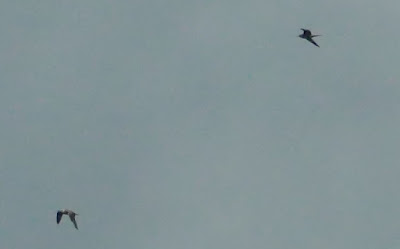November
November is the end of the migration season but I often find it can be productive on my W Fife patches well into the month. November 2023 was helped by a good showing of Waxwing and I had a few passing through Ferry Hills.
Not all Waxwing were migrating overhead at Ferry Hills with two birds feeding on Hawthorn berries at close range as well.
I also came across small flocks outside my house at Dunfermline and at St Margaret's Marsh during November.
Best find this month was a locally rare Water Pipit which frequented the ditches and pools at St Margaret's Marsh from 10th-24th.
December
I was on holiday from the 11th and although plenty of time was taken up with domestics and bird recorder duties, I enjoyed a few outings.
Best bird was a rather unexpected Grey Phalarope at Kinghorn on 11th which flew in from the east and landed on the sea during rather benign conditions. Certainly a world away from the conditions in October which brought an influx of this species into the Forth during Storm Babet. That said, a check of the weather maps showed a fairly strong NE airflow offshore in the North Sea at the time.
The same seawatch also produced good views of two feeding Red-necked Grebes.
I had a feeling of Deja Vu when I came across a 1st winter male Scaup on Kinghorn Loch after finding Fifes 2nd Lesser Scaup there at exactly the same time of year in 2022. This time lighting hadn't struck twice and it was a Greater Scaup, although still a good record locally in West Fife.
The year finished with very close views of a Slavonian Grebe at Loch Gelly and an influx of Scandinavian Herring Gulls at several sites.











































